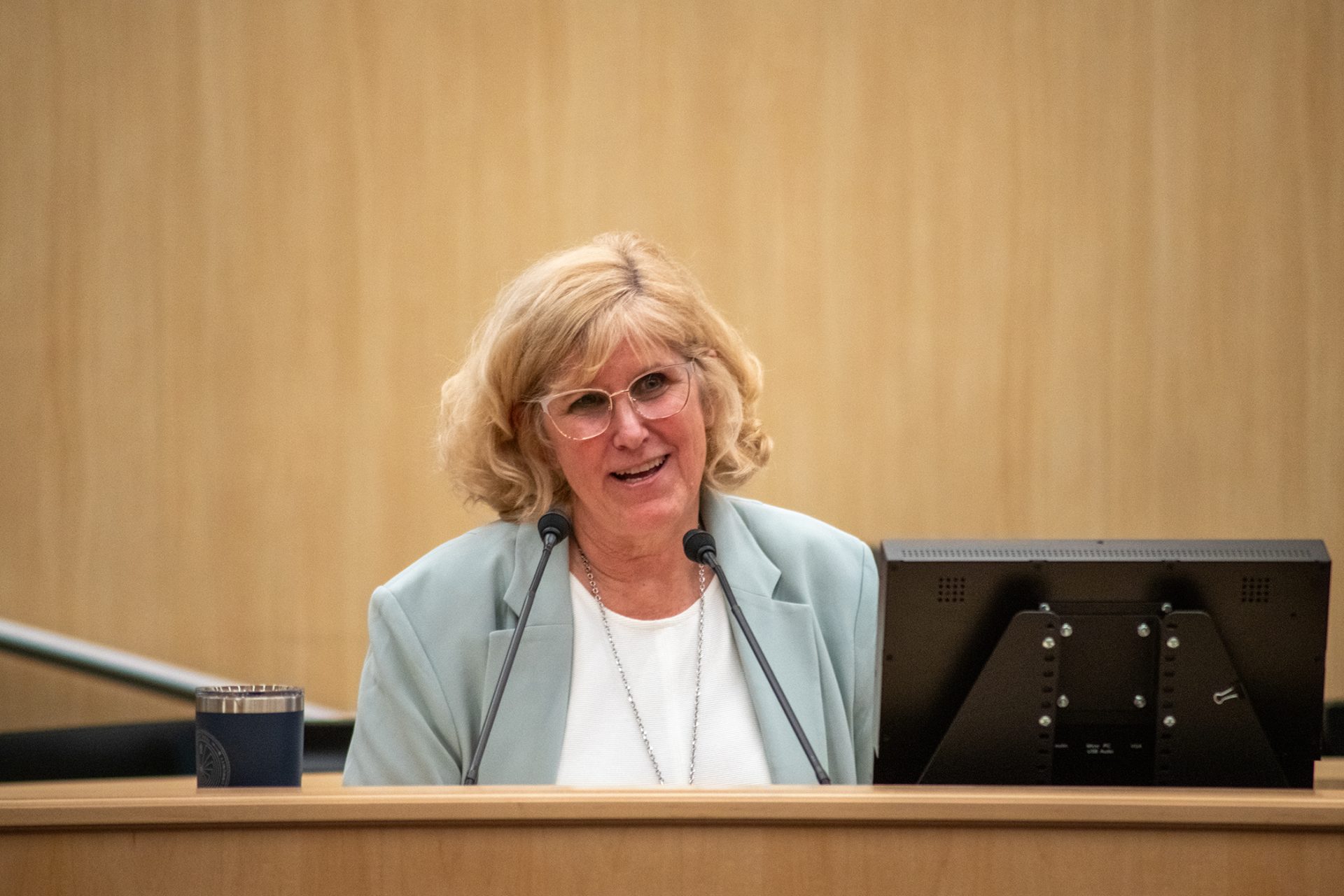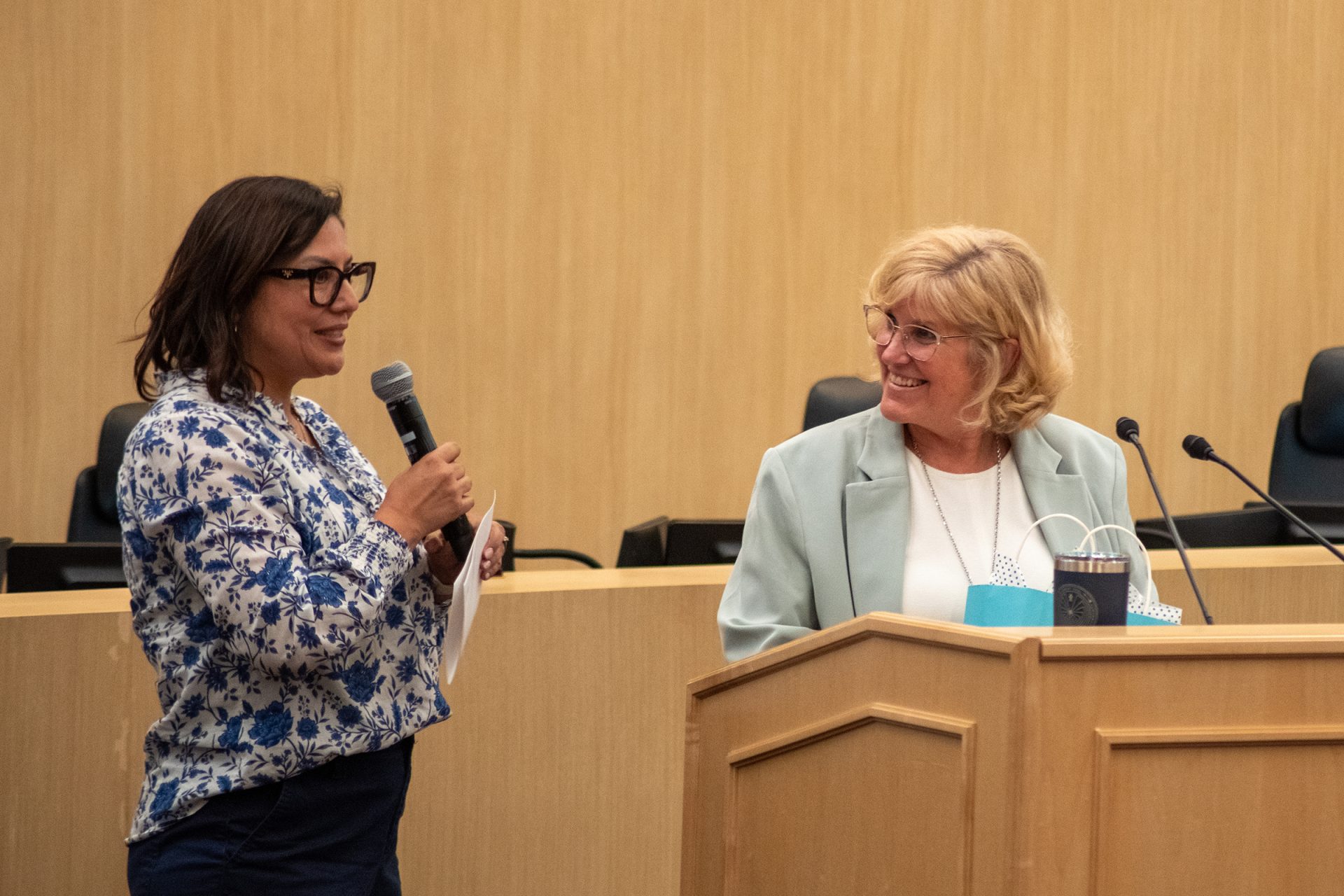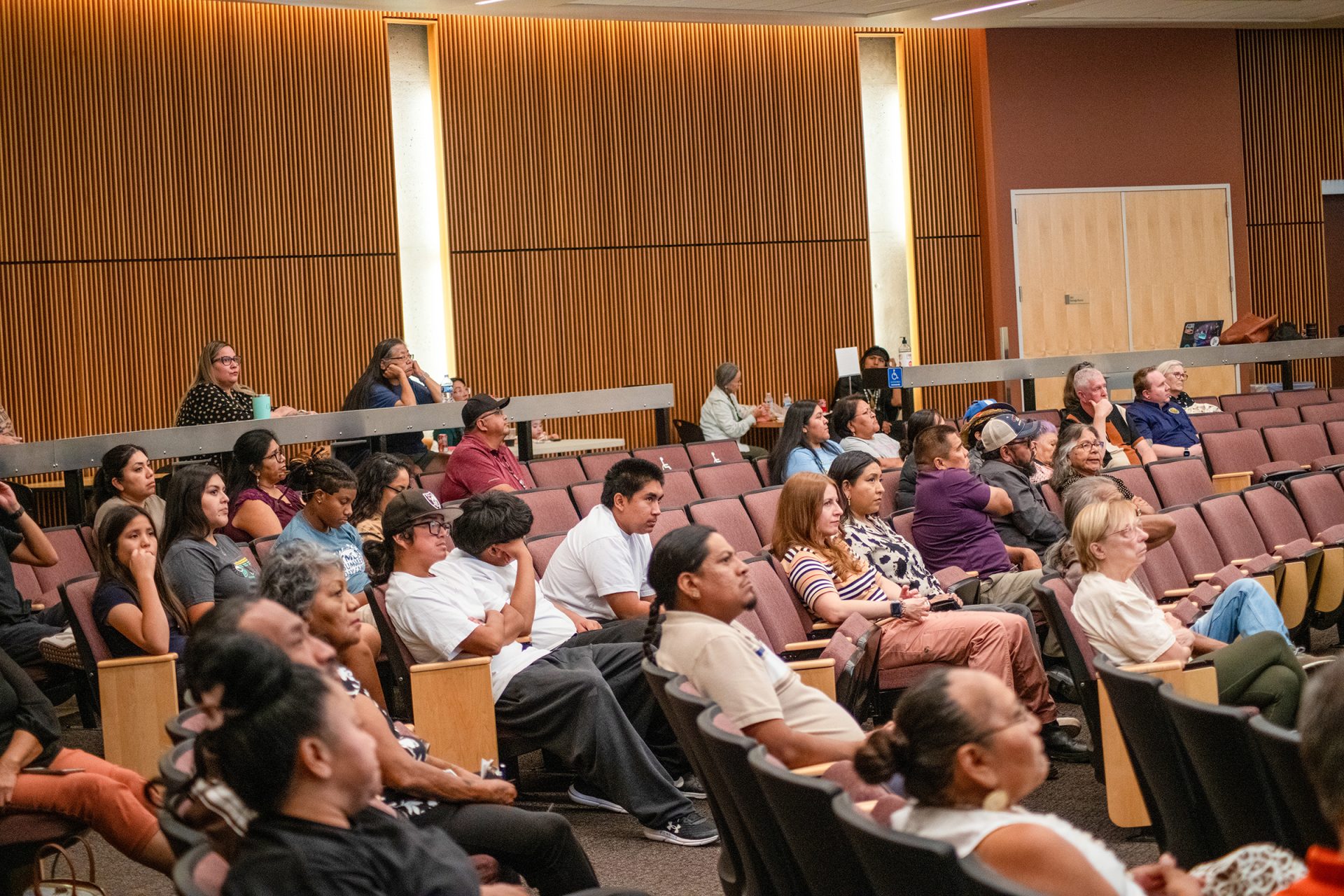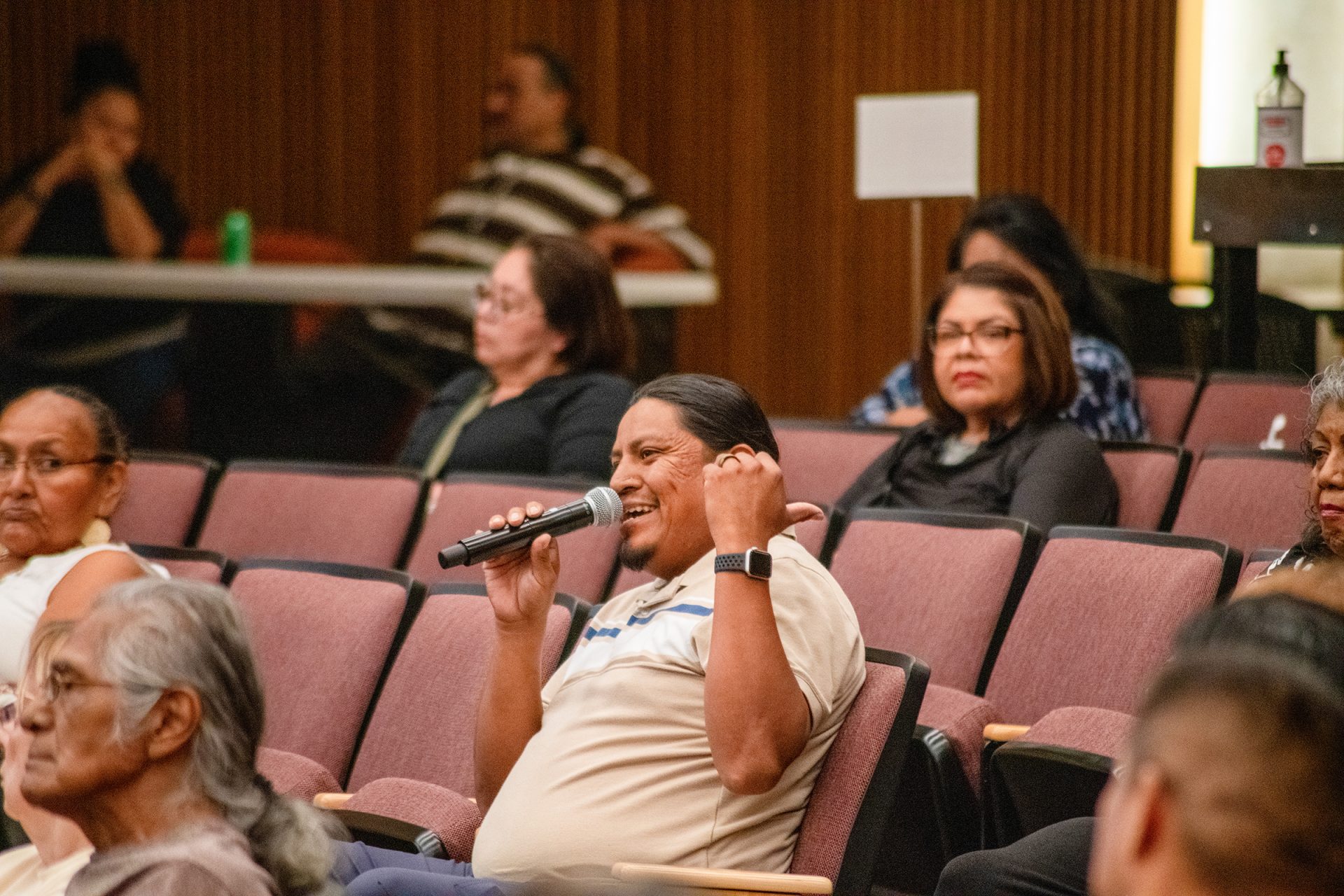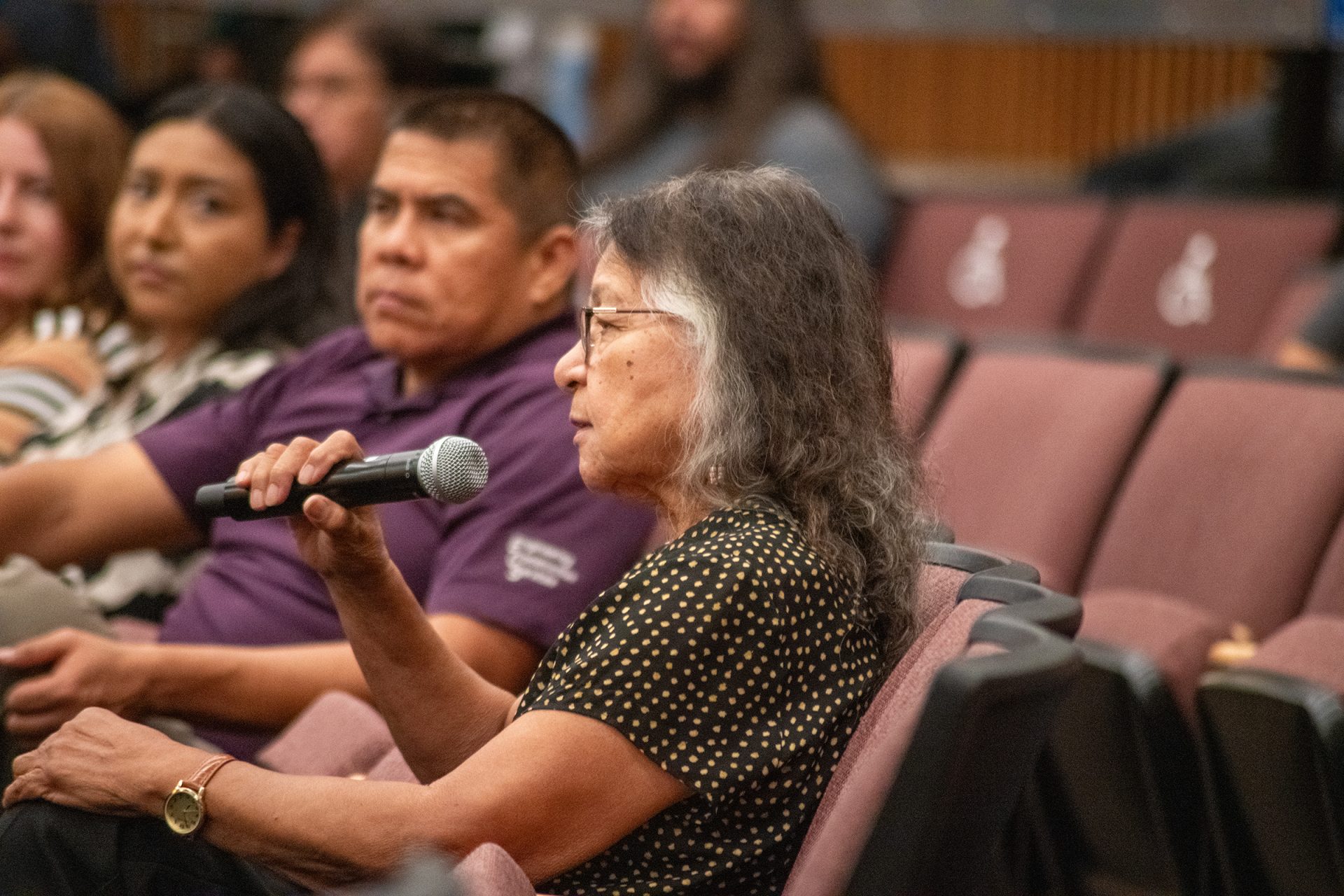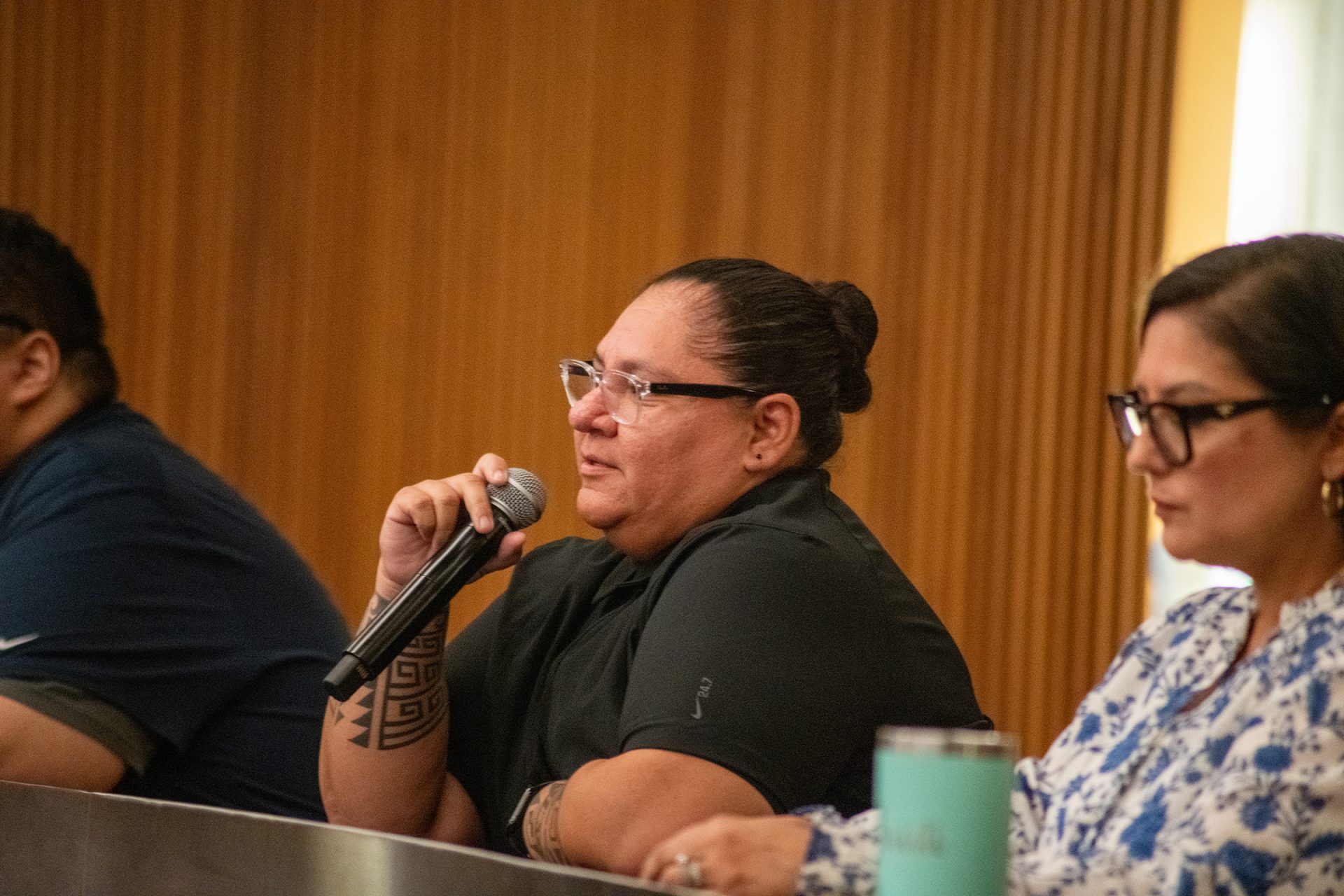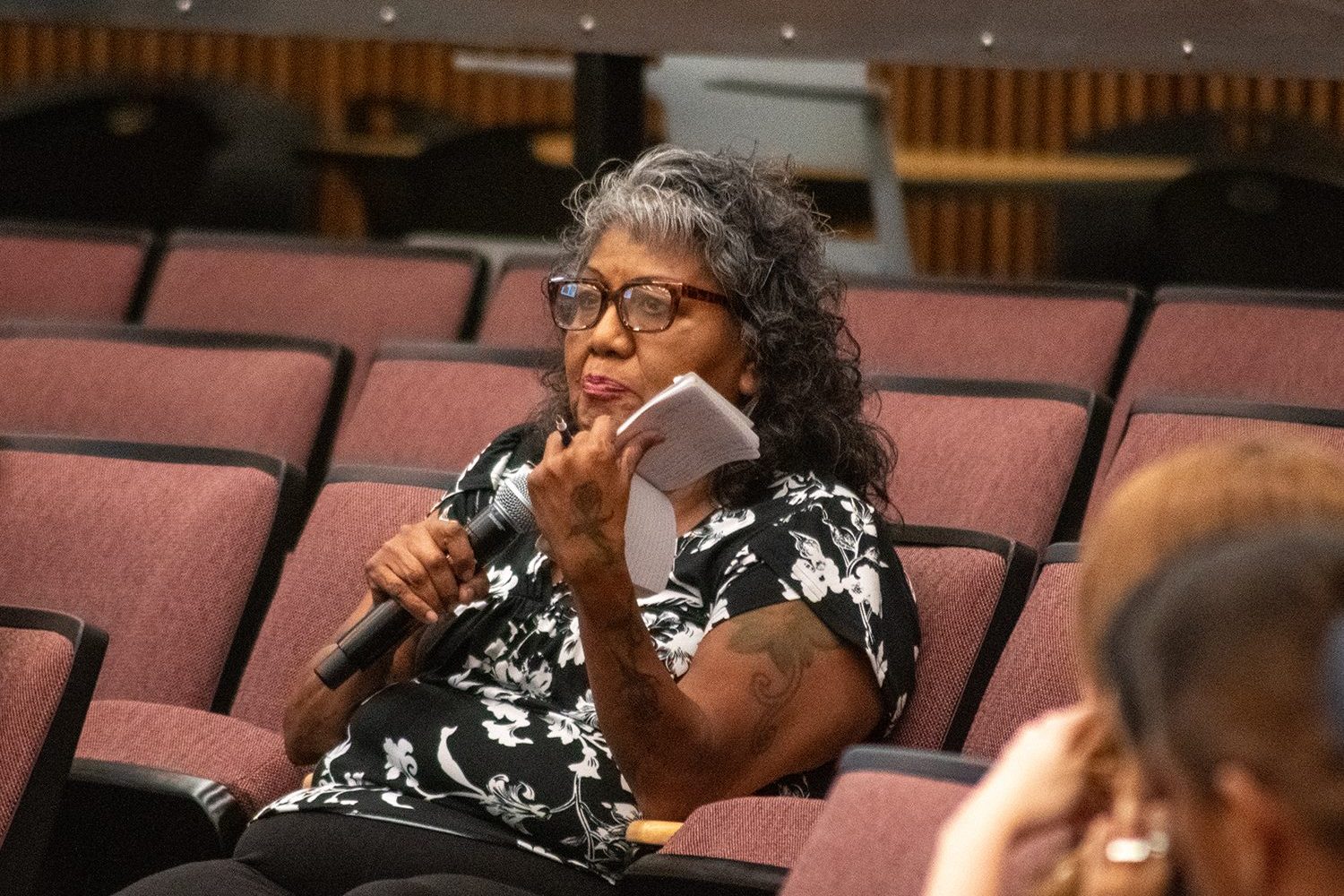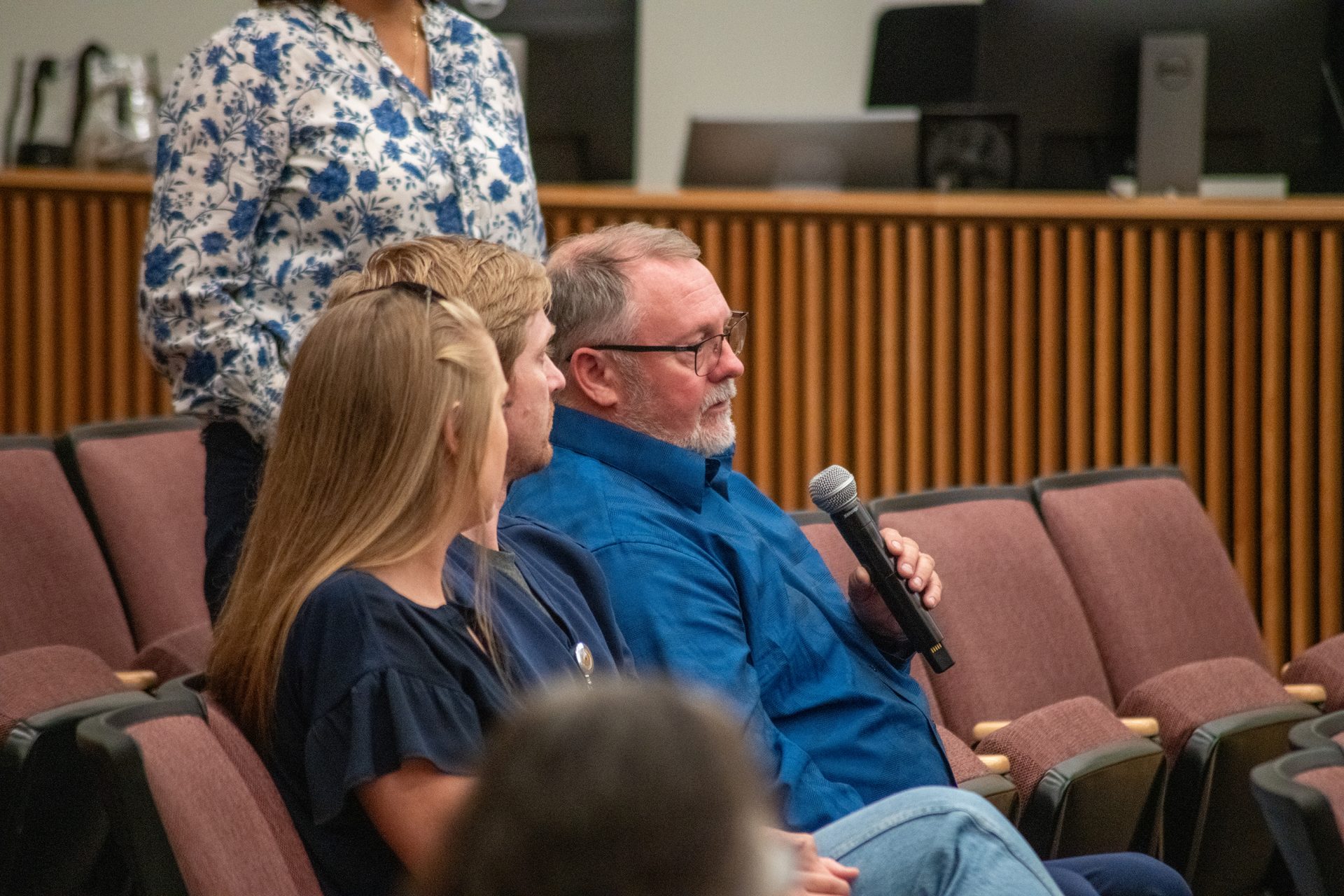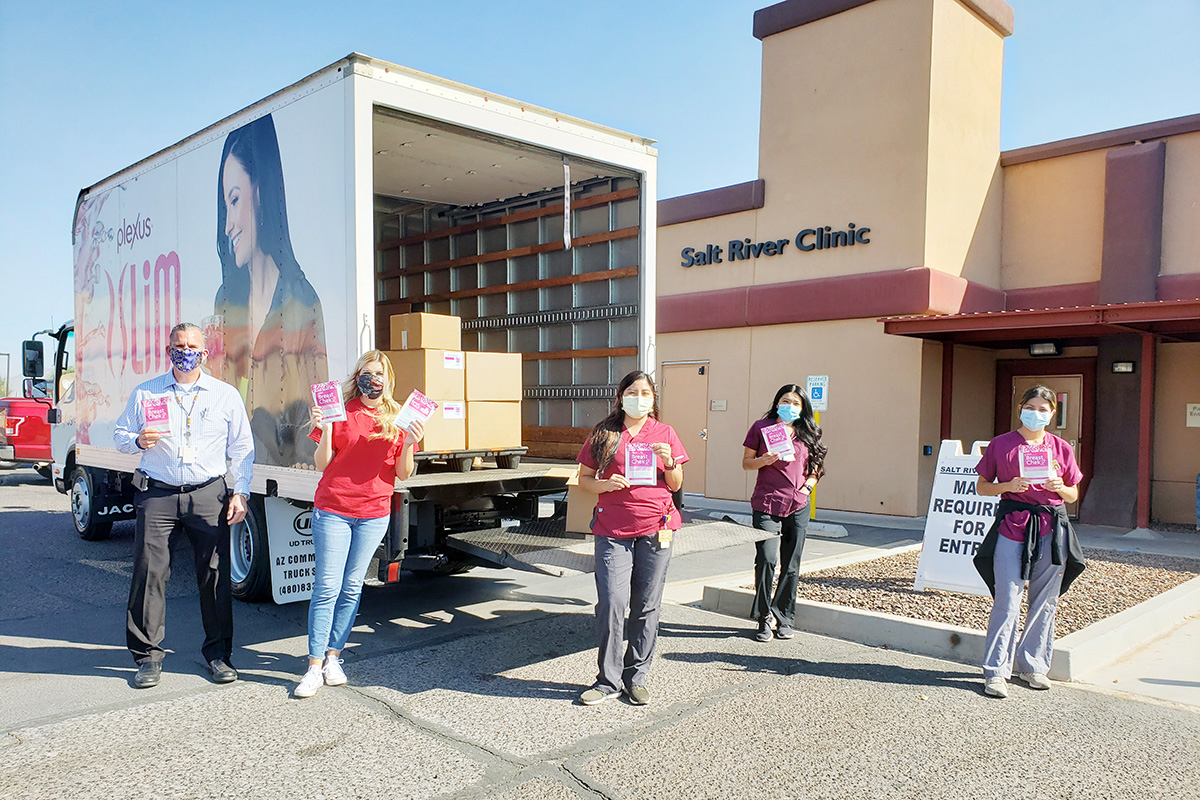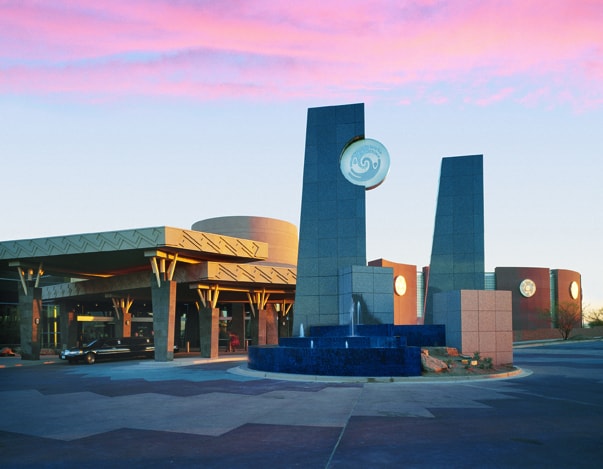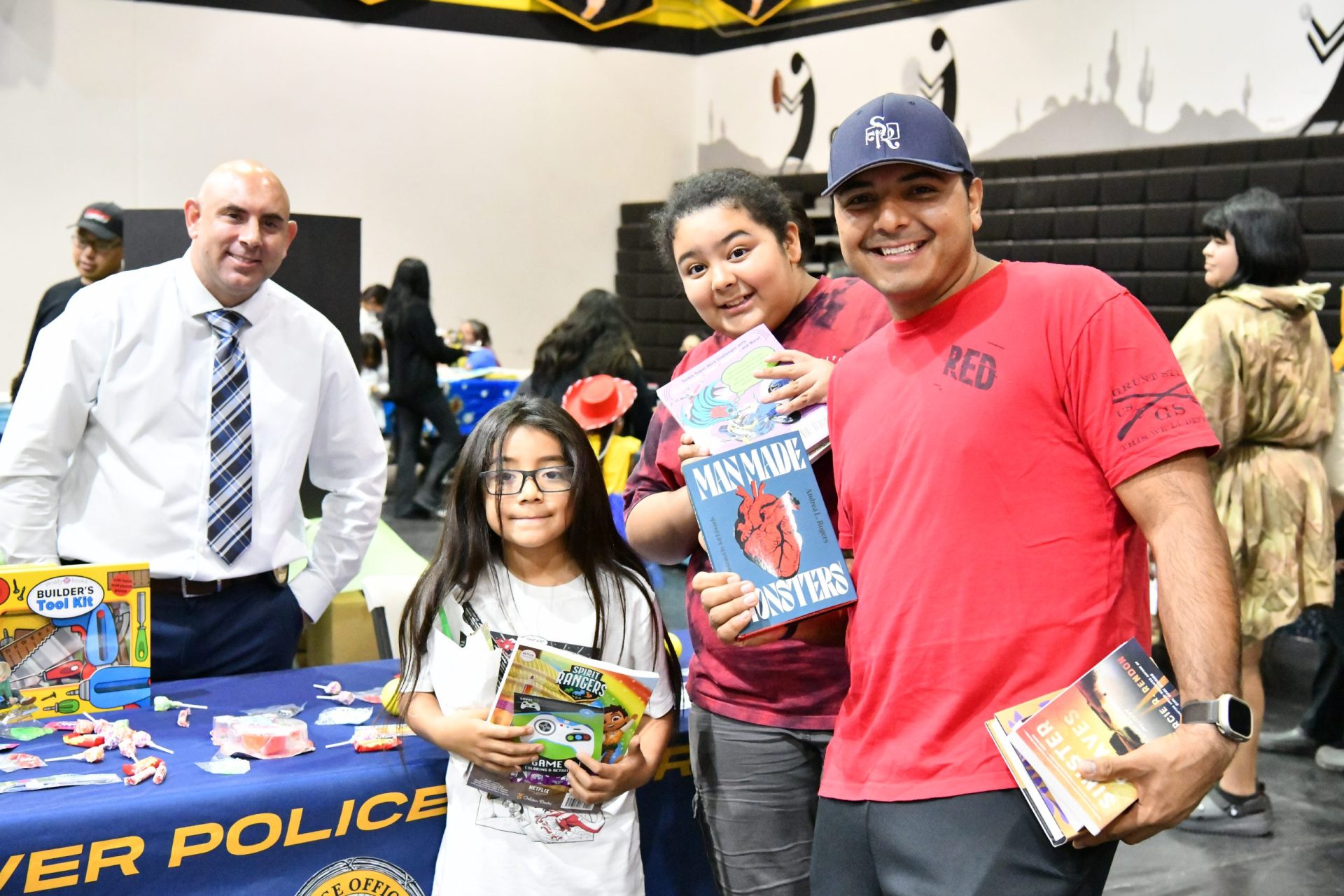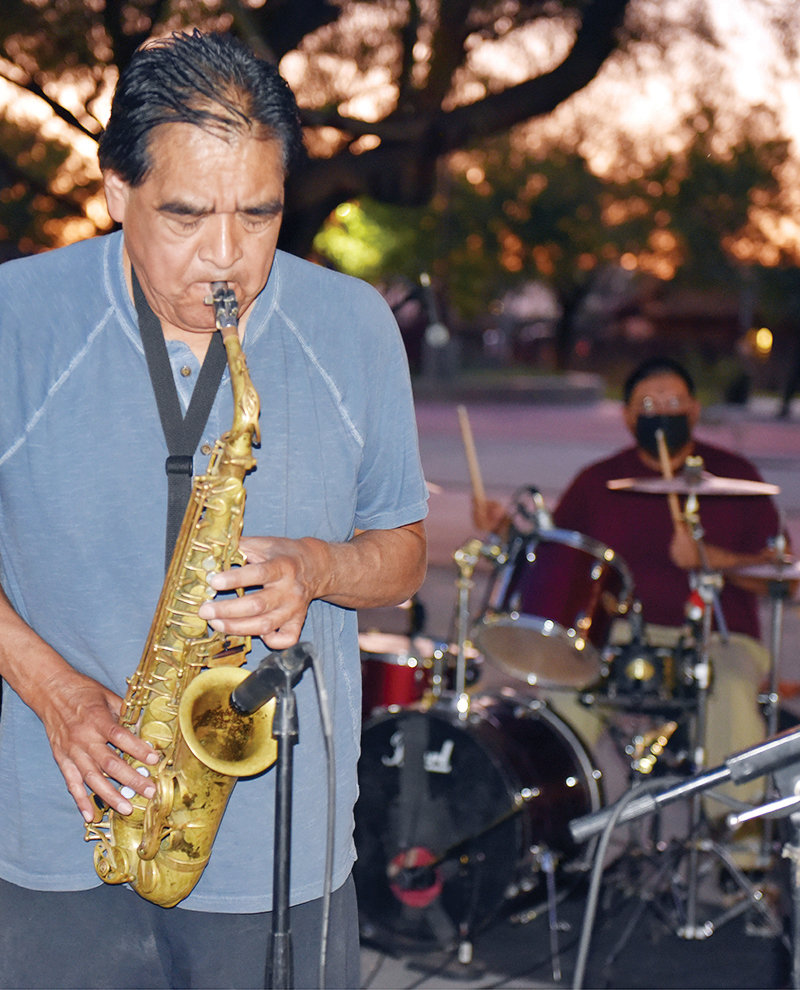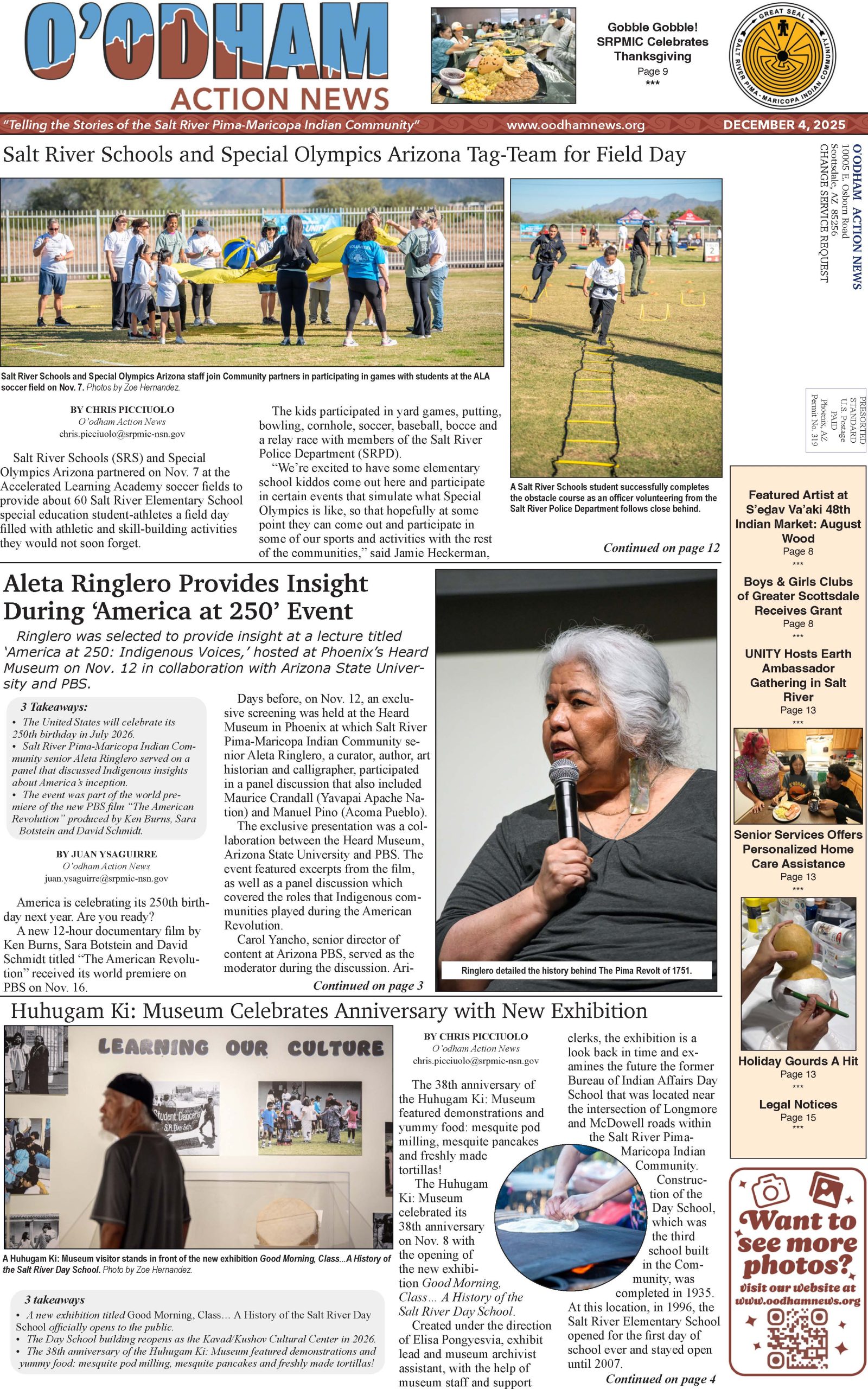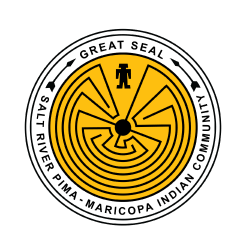VIEWS: 338
October 20, 2025Summer Speaker Series Wraps Up with Water Story
- The health of the river, forest, and land are connected and all need to be in balance for large-scale sustainability.
- Because river levels are variable year to year, dams are used to help store water during times of lower inflow.
- Full recordings of the Summer Speaker Series are available on the SRPMIC website.
At the final gathering for the inaugural Summer Speaker Series hosted by Assistant Community Manager Lena Jackson, Salt River Pima-Maricopa Indian Community members and guests had the opportunity to learn about Salt River Project’s role in managing water.
The presentation offered a forward-facing perspective of how delicate the balance is when water is diverted from the Salt River to be delivered to the Community and beyond.
Invited to speak was Salt River Project Associate General Manager and Chief Water Executive Leslie Meyers. She shared a perspective on how knowledge of the river’s past influences the present and future of water use in the Salt River Valley. After sharing some statistics on water use and explaining how water on this scale is referred to as “acre-feet” rather than gallons, she shared some of the beginnings of Salt River Project, or SRP.
The general footprint of the canals and water systems in the Valley largely follows one laid out by those who came before, the Huhugam, who were referred to in the presentation as “engineering visionaries” for their work. Meyers said that the reason these systems didn’t last is because the water levels are variable, meaning they aren’t always consistent year to year. Meyers explained that creating the Salt River dams helped to divert and develop water when it is there and store it for future use. This project was part of larger governmental work in 1902 after U.S. President Theodore Roosevelt established the Bureau of Reclamation, leading to Roosevelt Dam being built on the Salt River in 1903.
The Salt and Verde rivers are a vital source of life and power for all who call this area home, but Meyers made sure to include the broader context of Arizona as a whole being a hotbed of discussion for water rights. She explained that another project, Central Arizona Project, or CAP, is focused on the Colorado River. She provided some insights into how much larger and more complicated that system is because of the multiple states involved.
Importantly, she discussed how happenings upriver lead to large impacts downriver, using as an example how fluctuating weather can cause snow in Wyoming to evaporate before it can melt and join the inflow of the river, lowering the water levels and thus water resources for that year overall. Similar challenges on the Salt and Verde rivers have led to suggested infrastructure improvements, like building a new dam to better store large amounts of water and avoid needing to release and therefore waste it, as was done in 2023. For the Salt and Verde rivers, this is tied heavily to the health of the surrounding forests; work must be done to ensure enough trees are growing without drawing too much from the water supply, keeping it in balance with the river’s health.
After more insights on the complicated workings of water rights and allocations, the session was opened for questions from the audience online and in person. Community members asked questions about how the Community can ensure its interests are well represented in these decisions, such as having appointments to boards. One suggestion from the audience was that a planned new dam have Community input for naming it, offering Huhugam Dam as a possibility.
Other questions centered on how collaboration with tribes can be coordinated to ensure the health of the land is maintained using the traditional knowledge of the people who have been here, giving the example of other states having agreements for controlled burns facilitated by local tribes as part of their land management plans.
The story of water in this region is one that is ongoing, and by knowing the history and connections between the water and the land we can ensure it continues for generations beyond ours. The presentation proved to be a natural conclusion to this year’s Summer Speaker Series as an end where life begins: with water.
The series is planning to return next summer. To view the sessions from this year, visit https://srpmic-nsn.gov/events/voices-of-summer-salt-river-summer-speaker-series/.
